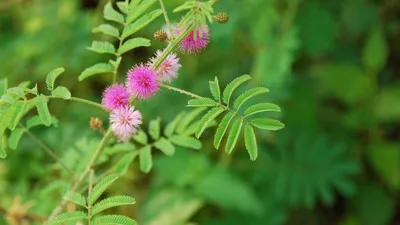Mimosa Hostilis Root Bark (MHRB): An Ancient Plant with Modern Benefits
Mimosa Hostilis Root Bark (MHRB) is a fascinating plant with a long history of use, especially in traditional shamanic practices in South America and parts of Mexico. Known scientifically as Mimosa tenuiflora, MHRB has gained international recognition for its unique properties, particularly its high content of tryptamines, including N,N-Dimethyltryptamine (DMT), a compound valued for its psychoactive and medicinal potential.
Traditional Uses and Cultural Significance
For centuries, indigenous communities have revered MHRB as a sacred plant. It plays a central role in traditional healing rituals, spiritual ceremonies, and as a natural dye source. The inner root bark of the plant is prized for its deep red to purple coloration, used in textile dyeing—a practice dating back to the Maya civilization. However, beyond its practical uses, MHRB holds a spiritual significance in shamanic practices, where it’s used as a potent tool for spiritual healing and visionary experiences.
Modern Applications of MHRB
Today, MHRB is a subject of research and use in multiple fields:
- Ethnobotany and Medicine: Researchers are investigating the properties of MHRB to understand its benefits and effects on mental health and consciousness. DMT, a key component, is believed to promote introspection, helping with issues such as depression, PTSD, and addiction when used under guided conditions.
- Natural Dyeing and Textiles: MHRB’s natural colorants make it a sustainable choice for textiles and cosmetics, aligning with the growing interest in eco-friendly products. The bark’s pigments are highly resilient, offering rich hues for fabric dyes and natural inks.
- Psychonautics and Consciousness Exploration: MHRB has gained popularity within the psychonaut community, where individuals explore altered states of consciousness. This plant’s potential to facilitate introspective journeys has led to its recognition as a valuable tool for understanding human psychology and consciousness.
Ethical and Environmental Considerations
With the increased demand for MHRB, ethical sourcing and environmental sustainability have become pressing concerns. Harvesting practices that respect traditional methods and preserve natural ecosystems are essential to prevent overexploitation. When sourcing MHRB, it’s vital to support suppliers who prioritize sustainability and give back to the indigenous communities that have stewarded these lands and plants for generations.
Working with MHRB Responsibly
While Mimosa Hostilis Root Bark (MHRB) properties can provide profound experiences, it’s important to approach this plant with respect and knowledge. Education on dosage, preparation, and legal considerations is crucial, as is understanding the potential risks and effects.
In summary, Mimosa Hostilis Root Bark remains an intriguing and versatile plant with applications that bridge traditional wisdom and modern science. Its role in healing, consciousness exploration, and sustainable dye production makes it a symbol of how ancient plants continue to shape our understanding of health, spirituality, and environmental stewardship. Whether for its cultural significance or potential in medicinal research, MHRB invites us to explore new dimensions of the natural world and our own inner landscapes.







